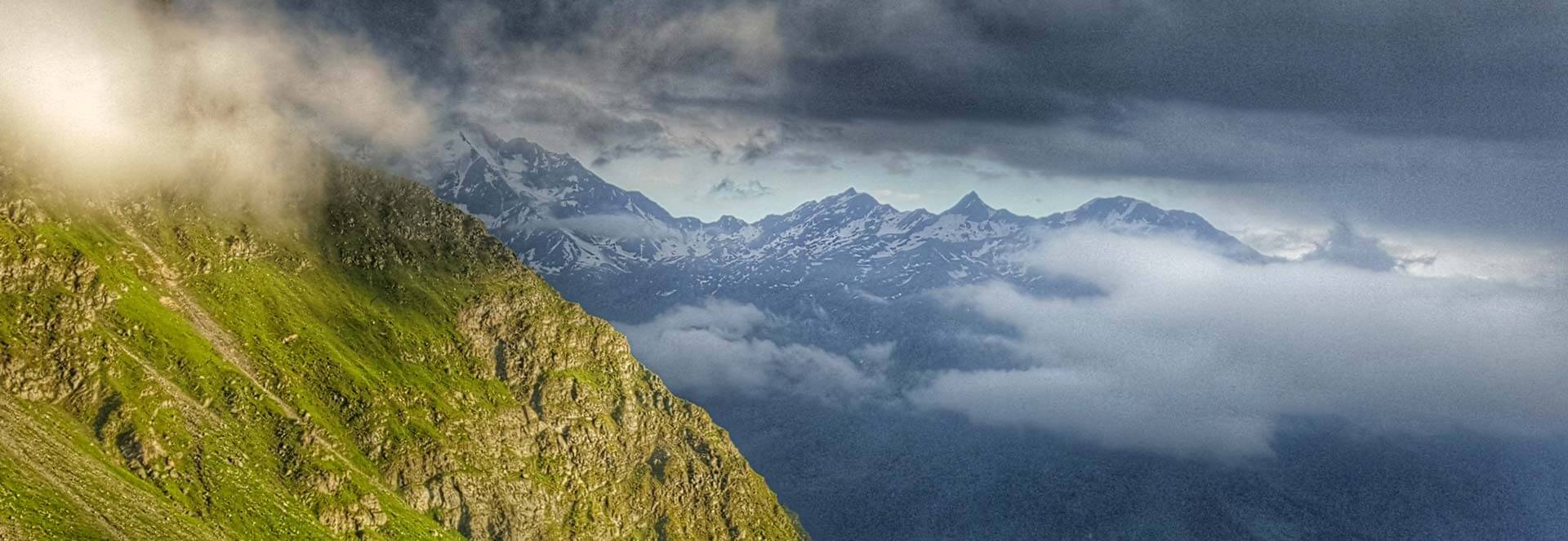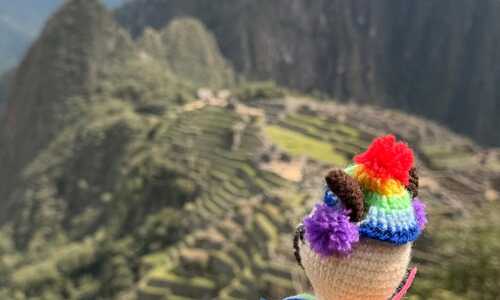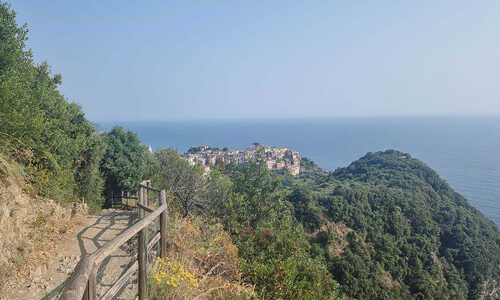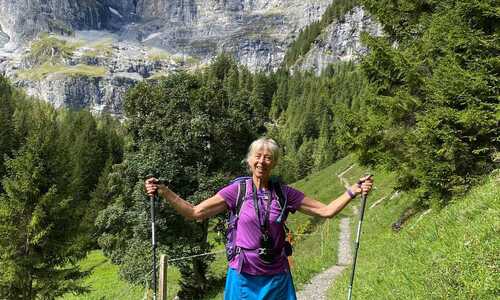Mont Blanc Treks and the Environment we Live and Work In
19/11/2018
"From knowing comes caring and from caring comes change"
As a walking tour provider and of course trekking guides it is our obligation to minimise any harm on the environment that we work in. We have a duty to make sure all our guests are fully aware of the environmental issues that face this most impressive landscape.
It’s a fine balance between the love and passion people have for this area and the effects of tourism, the environment around Mont Blanc is extremely fragile and its location and accessibility its own worst enemy. This is the third most visited site in the world and Mont Blanc attracts approximately 6 million visitors a year. Tourism has been the focus within the area since the 17th Century and since then Chamonix and its surrounding area has developed into an all year around resort and a mecca for mountaineering, hiking, skiing and sightseeing. The very fact that you can, within an hour from Geneva international airport, be up close and personal with the highest mountain in western Europe and be in spitting distance of the most impressive glaciers in the world is why this environment is under such threat.
In the 25 years that I have been in the valley I have noticed a massive difference & have seen the environmental impact with my own eyes, most noticeable is the retreat of the glaciers to incredible proportions.
Main Issues
- Air pollution
- Littering
- Erosion
- Degradation of vegetation
- Disturbance to Fauna
Air Pollution
Air pollution in the Chamonix valley is a real problem this is caused by the volume of traffic from tourism & also the location of the Mont Blanc Tunnel which connects France to Italy making an easier route for freight traveling through Europe. It is also caused by residents burning green waste during the winter. As the ‘V shaped’ valley is so steep sided polluted air often remains trapped in the valley bottom especially in winter.
So how is the problem being tackled?
Redevelopment of the rail system making the valley more accessible by rail from the outlying areas.
Free transport system within the valley and the investment in green buses.
Forbidden access to the valley for the most polluting vehicles
Financial incentives & tax benefits to those renovating properties in an environmentally friendly and energy saving way.
There are still major issues with the volume of freight using the Mont Blanc Tunnel which is Swiss, French and Italian owned. Before we see any significant change here there needs to be greater intervention and investment from central government.
How can you help?
Use the local public transport provided, in most cases its free or heavily subsidised.
Use shared transfers to & from the airport rather than arriving individually.
Littering in the mountains
The state of our world oceans has hit major headlines over the past year but this is also a problem in the mountains, it’s hard to believe in this day & age but the mountains are littered with obsolete facilities such as barbed wire, live shells, ammunition, abandoned ski stations and disused cable and of course rubbish left behind by climbers, hikers & skiers.
So how is the problem being tackled?
Since 2002, Mountain Wilderness has been working on this problem, including raising awareness of the adverse impacts of this debris on fauna and fora, soils and rivers, and on the global ecosystem. With projects, such as Cleaning up the Alps
How can you help?
We ask that you do your bit when coming to the Alps this year & in the future. “Take only memories & leave only footprints”, pass though this environment, enjoy what you see & leave minimal trace. Take your rubbish with you!
Erosion & degradation of vegetation
As you would expect the trails on the Tour du Mont Blanc take a pounding between June & the end of September. The trails are scars on the landscape & we are not going to be able to reverse that but we can reduce & stabilise the effects. The effects of trampling on vegetation when folk veer off the trails, and the rate of recovery of vegetation is massive. Considering most of the landscape you walk on between June & September is covered with snow for 6 months of the year there is limited time for rejuvenation. The flora & vegetation is fighting a losing battle when if the only time of the year it can flourish it gets destroyed by us.
So how is the problem being tackled?
In most parts of the tour there has been great efforts made by communities & volunteers to implement erosion control.
Sections of the trail that are most at risk have been closed & diversions are put in place.
Areas of fragility have been sectioned off to prevent human traffic.
How can you help?
Don’t take shortcuts and stay on the trails & respect any signage, notices & redirections.
Disturbance to Fauna
It is fantastic to see Ibex, Chamois and Marmot whilst out on the trail but this has become less frequent in recent years due to the number of hikers. Human intrusion into their territory disturbs them as wild animals are shy and love to be on their own.
So how is the problem being tackled?
- The creation of National Parks & Nature Reserves & you will pass through several these on the Tour du Mont Blanc & Haute Route.
- Strict rules & guidelines for folk to adhere to, these are clearly displayed on the boundaries to the Nature Reserves.
How can you help?
Take notice when entering the Nature Reserve, adhere to the rules & regulations. Do not leave food around after a pic-nic stop even biodegradable waste for example, an apple core or banana skin.
Active organisations
There are several organisations that are active in this area & worldwide, take a look at the work they do and the projects they promote and support. They rely on our support whether that be by means of donating, becoming a member or just casting your vote in support of a particular project.
Mountain Wilderness: http://www.mountainwilderness.org
Mountain Wilderness International (MWI) is an umbrella organization that facilitates communications and exchanges between the country organizations or chapters of Mountain Wilderness, where most of the action occurs. It coordinates and organizes international actions and is the official representative of the association in all international contexts with Governments and Non-Governmental Organizations.
European Outdoor Conservation Association: http://www.outdoorconservation.eu
The outdoor sector and the millions of people who enjoy the great outdoors are active champions for the conservation of nature and wild places*
As a charitable organisation directly funding specific projects, the association wants to show that the European outdoor industry is committed to putting something back into the environment, and all working together a real difference can be made.
ProMont Blanc: http://www.pro-mont-blanc.org
The third most visited natural site in the world, Mont-Blanc attracts nearly 6 million visitors yearly. Without the benefit of international protection, the mountain is in real danger to the pressures of economic development and climate change. The goal of proMONT-BLANC is to make this mountain region a model of tri-national management and sustainable development - with a legal and political status recognized by the 3 countries and their local municipalities. ‘‘ Barbara Ehringhaus, Présidente of proMONT-BLANC
Mont Blanc Treks gives financial support to EOCA & Pro-Mont Blanc
For further advice & information regarding the environmental issues facing this area of the Alps then please get in touch at: info@montblanctreks.com




